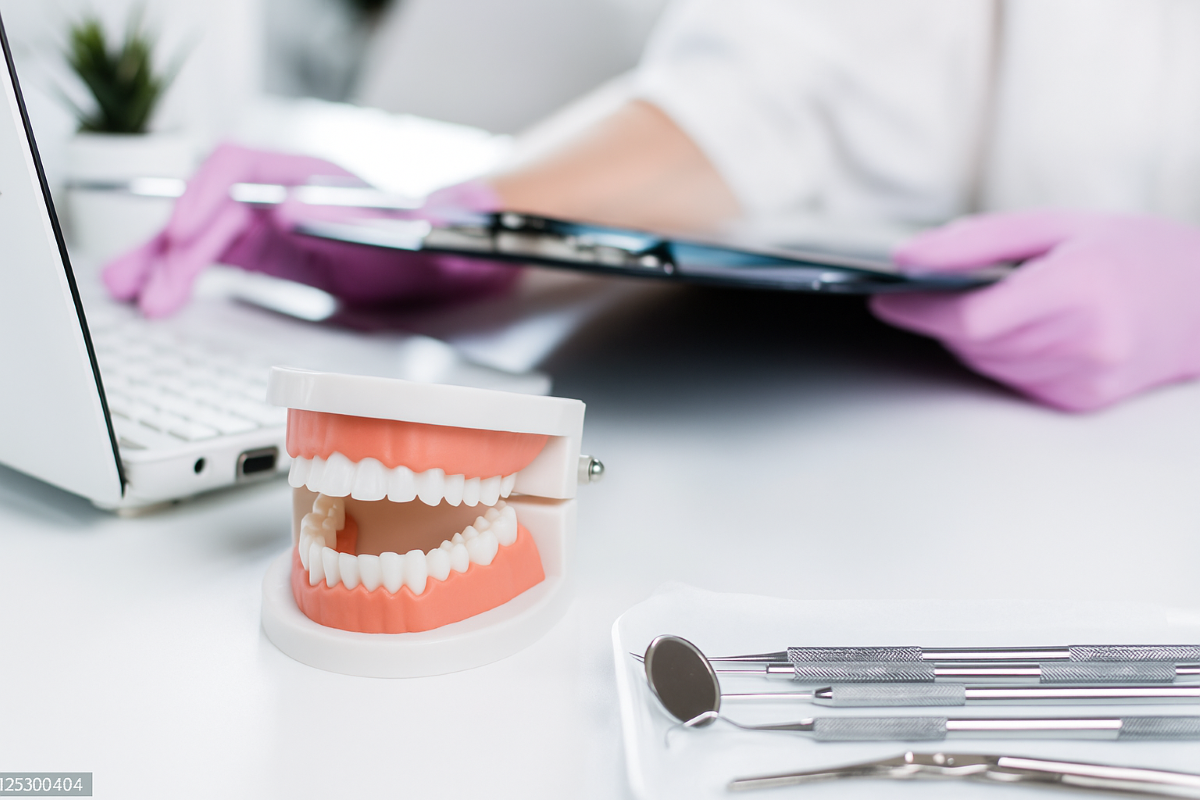Key Highlights
Improve Patient Care: AI receptionists enhance patient communication by providing 24/7 availability, reducing wait times, and offering personalized interactions.
Boost Efficiency: Streamline appointment scheduling, automate reminders, and manage patient intake efficiently, freeing up your team's time.
Ensure Compliance: Prioritize data security and HIPAA compliance through encrypted communication and secure storage of patient information.
Enhance Accessibility: Serve diverse patient populations by offering multilingual support and catering to patients' preferred communication channels.
Gain a Competitive Edge: Stay ahead in the rapidly evolving dental landscape by leveraging AI to optimize operations and enhance patient experience.
Introduction
In today's digital world, AI receptionists are changing how dental practices run. These smart systems improve patient care and make administrative tasks easier. This lets your team focus on the most important things. However, adding AI to your dental practice needs careful attention to HIPAA rules to protect patient information. This blog post will help you understand how to keep your AI receptionist, which we call IRA (Intelligent Receptionist Assistant), in line with HIPAA.
The Role of AI in Transforming Dental Reception
AI is changing how dental offices operate, especially in the front desk and patient management areas. With tools like natural language processing and machine learning, AI receptionists can take on many tasks that humans used to do.
They can answer patient questions, schedule appointments, send reminders, and collect information. AI receptionists make workflows smoother, help the office run better, and improve the patient experience. This lets dental professionals focus on providing great care while the AI takes care of administrative work.
Enhancing Patient Communication with AI
One major benefit of AI in dentistry is how it helps talk to patients better. Traditional ways to handle reception often cause long waits, missed calls, and issues when scheduling. AI receptionists fix these problems by giving patients an easy way to communicate.
AI systems can have real conversations. They understand patient questions and give correct details about procedures, appointments, and insurance. These systems can also send personal reminders for appointments. This reduces no-shows and makes the practice run smoother.
With AI, communication is automated and available all the time. This helps dental practices offer a better patient experience, leading to more patient satisfaction and loyalty.
Streamlining Appointment Scheduling and Reminders
AI receptionists are great at making routine tasks easier. They are especially helpful for scheduling appointments and sending reminders. When these systems work with your practice management software, they help you book appointments, fill your schedule better, and lessen the workload for your staff.
Here are some benefits of AI in appointment management:
Automated Scheduling: Patients can book appointments online or with voice commands without needing help from staff.
Real-Time Availability: The system shows available appointment times based on your practice's schedule and provider availability.
Personalized Reminders: Automated reminders through text messages or emails help reduce no-shows and keep patients updated.
By automating these important tasks, AI receptionists help increase efficiency, improve patient engagement, and reduce lost revenue from missed appointments.
Understanding HIPAA Compliance for AI Systems
Using AI in your dental practice means you need to really understand HIPAA rules. AI receptionists work with protected health information (PHI), so keeping data safe and following the rules is very important.
You should pick AI tools that are made just for healthcare. They should have strong security features and good ways to manage data. This means having data encryption, secure storage, and access controls to keep patient privacy safe.
Key HIPAA Considerations for Dental Practices
Protecting patient information is very important. When using an AI receptionist, make sure to focus on features that meet HIPAA rules:
Data Encryption: Make sure all data, whether stored or being sent, is encrypted. This helps stop unauthorized access.
Secure Storage: Select a system that keeps data on HIPAA-compliant servers and uses the right security protocols.
Access Controls: Use role-based access controls to restrict data access to only authorized people.
Also, keep detailed records of how your AI system works, its security steps, and how it handles data. This documentation is very useful for audits and shows that you take HIPAA compliance seriously.
Ensuring Patient Data Security with AI
Data security is very important when using any new technology, and dental AI is no different. Luckily, strong AI solutions are created with patient data security as a main focus. When looking at an AI receptionist, check their data encryption methods, access controls, and compliance certifications.
It's also essential for the AI to link easily with your current patient management systems. This link should allow secure data transfer and make sure that all communication between the AI receptionist and your PMS follows HIPAA rules.
By working with trusted AI providers who care about data security, dental practices can enjoy the benefits of AI while keeping their patients' information safe and private.
Implementing IRA in Your Dental Practice
Integrating IRA into your dental practice needs a careful plan. This helps create a smooth transition and gain all the benefits. You should choose an AI solution that fits your practice’s needs. This includes your patient management system and how you like to communicate.
Working closely with your AI provider is important. This will help with a smooth setup, offer training for your staff, and provide support. This way, you can get the most out of your AI receptionist.
Steps to Integrate IRA Seamlessly
Integrating a new system like an AI receptionist can be done smoothly. Here are some steps to follow:
Assess and Plan: Look at your practice's needs and find areas to improve. Set clear goals for using the AI receptionist.
Choose the Right Provider: Pick a provider who knows dental AI well. They should help you integrate easily with your current systems. Make sure they also have strong security and good customer service.
Data Migration and Integration: Work closely with your provider. Ensure data moves safely from your current systems to the AI receptionist, keeping it secure and correct.
By planning and following these steps, you can make the transition easier. This will help your team get used to the new technology quickly.
Training Your Team for Optimal Use of IRA
Investing in good training for your dental team is important to make the most of IRA. Your training programs should include:
Understanding AI Basics: Help your team learn the basics of AI, its role in dental practice management, and how it fits with your current workflows.
Using IRA Effectively: Offer hands-on training so your team can use IRA’s interface, get patient information, manage appointments, and solve common problems.
Maximizing IRA's Features: Show them how to use advanced features like custom communication templates, appointment tools, and performance analytics to improve efficiency and the patient experience.
Measuring the Success of Your AI Dental Receptionist
To understand how IRA affects your practice, you need to keep an eye on certain performance indicators. Watching these numbers can show you how well it works in reaching its goals, which include better patient satisfaction, more efficiency, and higher revenue.
By regularly checking data such as how often appointments are booked, the number of patient calls, and their feedback on IRA, you can make sure you are getting the most out of it. This also helps you find areas that need more improvement.
Key Performance Indicators to Watch
To check how well your AI receptionist is working, keep an eye on these important points:
Patient Satisfaction: Regularly ask patients for feedback to see how IRA affects their experience. Focus on how easy it is to schedule, how clear the communication is, and how satisfied they are with the AI interaction.
Appointment Booking Rates: Look at the booking trends before and after you start using IRA. If you see more appointments, fewer no-shows, and better use of the schedule, this shows a good impact.
Online Engagement: Track how many people visit your website and schedule appointments online. If these numbers go up, it means patients appreciate the easy access and convenience that IRA provides.
By keeping track of these points, you can improve IRA's performance and adjust its features to better serve your practice over time.
Gathering Patient Feedback on IRA Interaction
Patient feedback is invaluable in refining IRA's performance and ensuring it aligns with patient preferences. Implement multiple feedback channels to capture diverse perspectives:
Post-Appointment Surveys: Include specific questions about IRA interactions in your existing patient satisfaction surveys.
Feedback Forms: Provide dedicated feedback forms in your office or on your website for patients to share their experiences with IRA.
Online Reviews: Encourage patients to leave reviews about their overall experience, including their interaction with IRA, on platforms like Google My Business.
Gathering qualitative feedback helps you understand the nuances of patient interactions with IRA. Here's a sample structure for collecting feedback:
Feedback Category | Question |
|---|---|
Ease of Use | How easy was it to schedule/manage your appointment with IRA? |
Communication Clarity | Was the information provided by IRA clear and helpful? |
Overall Satisfaction | How satisfied are you with your overall experience with IRA? |
Conclusion
In conclusion, making sure your dental practice follows HIPAA rules is very important when using AI like IRA. AI systems help improve patient communication and appointment scheduling. This makes things more efficient while keeping patient data secure. Dental practices need to focus on HIPAA rules and train their teams for using AI successfully. Keeping track of key performance indicators and collecting patient feedback can show how well AI like IRA is working. Using AI technology changes how the reception works and ensures patient data confidentiality in line with HIPAA. For more information on how to use IRA in your dental practice, contact our team today.
Frequently Asked Questions
How can AI be used in dentistry?
AI can be used in dentistry in various ways to enhance patient care and streamline administrative tasks. AI dental receptionists, like IRA, can help with appointment scheduling, answering patient queries, and managing patient data, all while maintaining HIPAA compliance. Additionally, AI can assist in diagnosing conditions through image analysis and predicting potential oral health issues. Integrating AI technology in dentistry can improve efficiency and overall patient experience.
How does IRA ensure HIPAA compliance?
IRA focuses on HIPAA compliance. They use strong data encryption, safe storage methods, and limit who can access data. These steps protect patient information and follow the rules of the healthcare industry.
Can IRA integrate with my current dental practice management software?
Yes, IRA works well with top dental practice management systems. This helps to create a smooth workflow and improves operational efficiency for your dental practice.
What training is required for my team to use IRA effectively?
We offer thorough training programs to help your dental team gain the skills and knowledge they need. This training will allow them to use IRA effectively. It will improve patient care and make practice management easier.
How can I measure the success of implementing IRA in my practice?
You should keep an eye on important Key Performance Indicators. These include patient satisfaction scores, how many appointments are booked, and online engagement numbers. Tracking these will help you understand how well IRA is working in your dental practice.
Will IRA be able to handle emergency dental calls?
IRA can learn to find and prioritize emergency dental calls. This way, patients will get help on time. It also allows your practice to provide great patient care.




